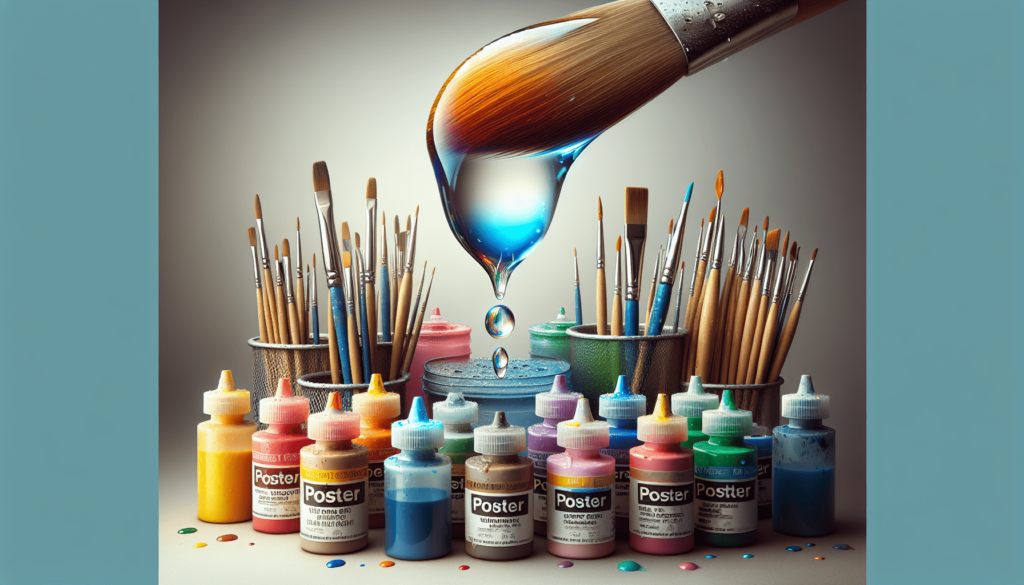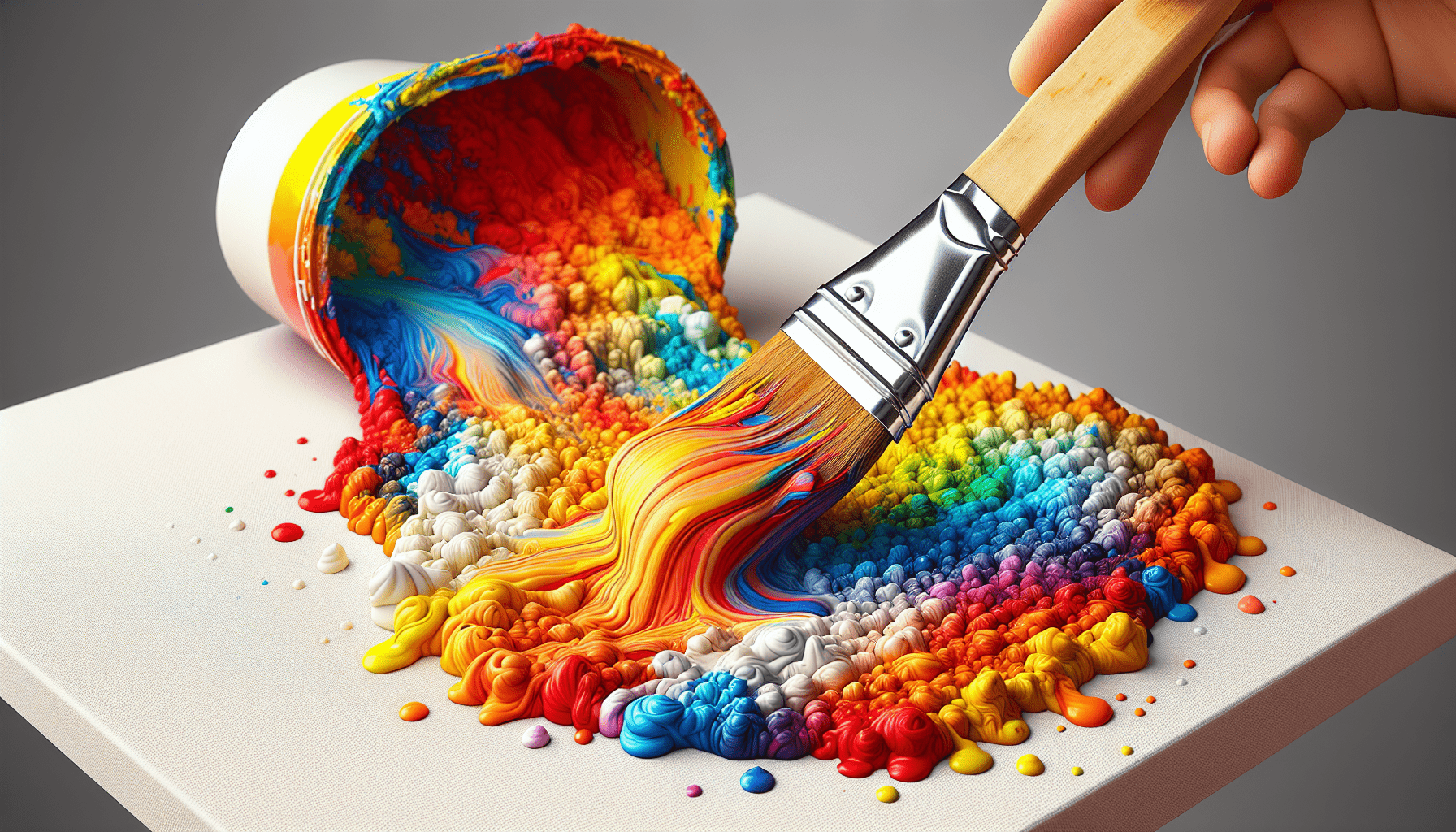Have you ever wondered if poster paint is waterproof? This is a common question that arises when selecting paint for craft projects, educational settings, or artistic endeavors. Understanding the properties of poster paint can help you make informed decisions about its application, durability, and maintenance.
Understanding Poster Paint
Poster paint, often termed tempera paint, is a water-based paint commonly used in educational settings and art projects. Due to its affordability, ease of use, and bright colors, it is a favored medium for both professionals and hobbyists. However, its water-based nature inherently raises questions about its waterproof properties.
Composition of Poster Paint
Poster paint generally consists of pigment, a binder such as gum arabic, and water. These elements combine to create a paint that is easy to apply and clean, but the water-based composition typically implies limited water resistance. Let us break down the core elements:
| Component | Description |
|---|---|
| Pigment | Provides color. Can be natural or synthetic. |
| Binder | Ensures cohesion and adhesion to surfaces. Commonly gum arabic. |
| Water | Acts as a solvent to ensure smooth application. |
Typical Uses of Poster Paint
Poster paint is versatile and can be used on various surfaces including paper, cardboard, wood, and more. In educational settings, it’s predominantly used for posters, signs, and art projects because it dries quickly and is easy to work with.
Waterproof Properties of Poster Paint
One of the primary considerations when using poster paint is its waterproof properties, or lack thereof. Due to its water-based formulation, poster paint is inherently prone to smudging and running when exposed to moisture.
Water Resistance vs. Waterproof
It’s essential to differentiate between water resistance and waterproof. Poster paint can exhibit mild resistance to water after it dries, meaning it may not immediately run if exposed to small amounts of moisture. However, it is not waterproof. This means prolonged exposure to water can cause the paint to smudge or dissolve.
Testing Waterproof Properties
To investigate the waterproof properties of poster paint, simple tests can be conducted. After the paint has dried thoroughly on a piece of paper or other medium, a water droplet can be applied to the surface:
- Water Droplet Test: Applying a single water droplet can show immediate smudging if the paint absorbs moisture.
- Submersion Test: Submerging a painted item in water will typically result in the paint dissolving and running.
| Test Type | Expected Outcome |
|---|---|
| Water Droplet | Smudging or bleeding of colors |
| Submersion | Dissolution and running of paint |

Enhancing Water Resistance
While poster paint is not inherently waterproof, there are methods to enhance its water resistance for more durable applications. These methods include varnishes, sealants, or using alternative paint types.
Using Varnishes and Sealants
Applying a protective coating over dried poster paint can enhance its water resistance. Varnishes and sealants create a barrier that prevents moisture from coming into direct contact with the paint.
- Clear Acrylic Spray: An acrylic spray can be used to cover the painted surface, providing a protective layer that enhances water resistance.
- Mod Podge: A popular craft sealant, Mod Podge can be brushed over the paint. It dries clear and adds a waterproof barrier.
Alternative Paint Types
For projects requiring water resistance, consider using alternative paints that are designed to be waterproof or more durable in the face of moisture.
| Alternative Paint | Description |
|---|---|
| Acrylic Paint | Water-based but becomes waterproof when dry |
| Oil Paint | Naturally hydrophobic but requires a longer drying time |
Using these alternatives ensures that your artwork or project will withstand exposure to moisture better than poster paint.
Practical Applications and Considerations
Choosing the right paint type depends on the specific requirements of your project. For educational crafts that will be kept indoors and away from moisture, poster paint can be an excellent choice. However, if the project will be exposed to the elements or requires long-term durability, opting for waterproof solutions or protective coatings is advisable.
Educational Settings
In educational settings, poster paint often suffices for short-term projects or those displayed indoors. It is cost-effective and safe for children, making it ideal for classrooms.
Professional and Commercial Use
For professional artists or commercial displays, it’s essential to consider the environment in which the work will be displayed. If there’s any chance of moisture exposure, taking additional steps to waterproof or selecting a more durable paint may be necessary.

Steps to Protect Poster Paint Artworks
If you have already created artwork using poster paint and wish to enhance its durability and water resistance, follow these steps:
- Ensure Complete Drying: Allow the paint to dry completely. This could take anywhere from an hour to several hours depending on thickness and environmental conditions.
- Apply Protective Coating: Choose a suitable varnish or sealant and apply it over the dried paint.
- Multiple Layers: For better protection, apply multiple layers of the protective coating, allowing each layer to dry before applying the next.
- Test for Water Resistance: After the protective coatings are completely dry, conduct a small water test to ensure effectiveness.
Conclusion
Is poster paint waterproof? By its very nature, poster paint is not waterproof. While it offers many advantages in terms of color vibrancy, ease of use, and safety, it is not suitable for applications requiring water resistance. However, with the proper techniques and protective measures, you can enhance the durability and water resistance of poster paint projects. By understanding its properties and limitations, you can more effectively select and prepare your materials for any artistic or educational endeavor.
From applying varnishes to considering alternative paints, the choices you make will directly affect the longevity and resilience of your artwork. By taking these considerations into account, you’ll be better equipped to create lasting, vibrant works of art or educational materials.



